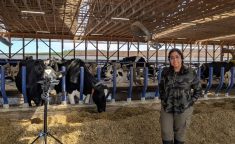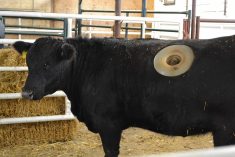Weed control officials across Canada are reportedly receiving many calls of concern about giant hogweed following national media reports last month.
Officials in Ontario are encouraging residents to be on the lookout for the toxic noxious weed that can grow as high as six metres. There have been confirmed cases of the plant in several areas of southern Ontario.
However in Alberta, where giant hogweed has never been confirmed, the provincial agriculture department has issued a release saying that it may be confused with cow parsnip, its much smaller cousin.
Read Also

Moo translator and methane measures: There’s an app for that
Dalhousie University researchers use artificial intelligence to create new dairy farm apps that analyze cattle sounds and measure methane.
“Giant hogweed belongs to the carrot family, Apiaceae, like several common native plants, including cow parsnip, Heracleum maximum, which is a very common plant in Alberta landscapes, especially in natural areas, Jim Broatch, pest management specialist with Alberta Agriculture and Rural Development said in a release. “Cow parsnip is frequently misidentified as giant hogweed because they look very much alike and it is easy to confuse the two.”
However Broatch says that anyone who believes they have giant hogweed should contact their municipal office and ask to speak to a weed inspector. The weed inspector can assist in the correct identification.
Introduced as garden ornamental, the weed has been spreading in North America. Aside from its invasive nature, the plant is causing concern because of its sap, which contains furanocoumarins, a chemical that bonds with human skin making it hypersensitive to sunlight. Exposure to the sap can result in burns, blistering and bubbling that can last for years after exposure as well as temporary blindness if rubbed into the eyes.














